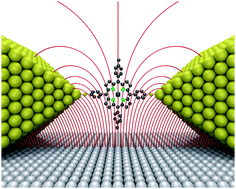Single-molecule transistors
Abstract
The use of a gate electrode allows us to gain deeper insight into the electronic structure of molecular junctions. It is widely used for spectroscopy of the molecular levels and its excited states, for changing the charge state of the molecule and investigating higher order processes such as co-tunneling and the Kondo effect. Gate electrodes have been implemented in several types of nanoscale devices such as electromigration junctions, mechanically controllable break junctions, and devices with carbon-based electrodes. Here we review the state-of-the-art in the field of single-molecule transitors. We discuss the experimental challenges and describe the advances made for the different approaches.

- This article is part of the themed collection: Molecular Wires

 Please wait while we load your content...
Please wait while we load your content...